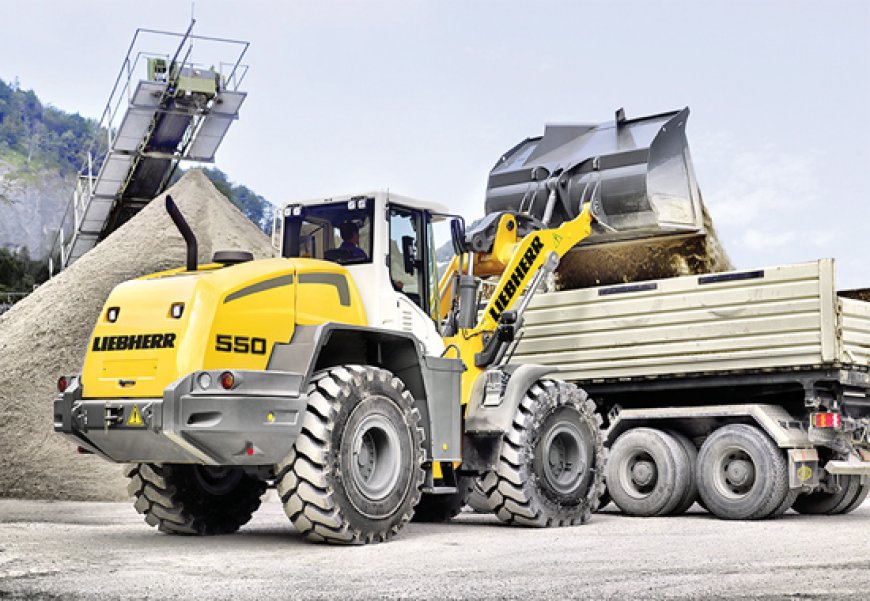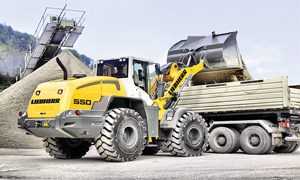Several German OEMs are planning towards more investments in India.
India has a unique opportunity to innovatively pave its own road to smart manufacturing. Rajesh Nath Managing Director, VDMA. The construction and mining equipment industry is today pegged at $4.3 billion in value, forecasting industry volumes to spike upto

India has a unique opportunity to innovatively pave its own road to smart manufacturing.
 Rajesh Nath
Rajesh Nath
Managing Director,
VDMA.
The construction and mining equipment industry is today pegged at $4.3 billion in value, forecasting industry volumes to spike upto over 1,20,000 units by 2021 growing at a CAGR of 20 per cent. “Policy changes in the infrastructure segment are expected to boost the equipment industry to an estimated $ 7.5 billion by 2020. The macro economic situation, government policy and availability of funding will support this upsurge,” Rajesh Nath, Managing Director, VDMA. In an exclusive interview with EQUIPMENT TIMES, Nath details about the changing trends in the construction and mining equipment segment.
What have been the export trends to India for German OEMs?
India is the second largest sales market in Asia for the German engineering industry. Top sectors attracting FDI inflows from Germany are Automobile industry (20.6%), Services Sector (15.9%), Construction (infrastructure) activities (15.6%), Industrial machinery (6.2%) and Drugs and pharmaceuticals (6.2%). These top 5 accounted for about 64.5% of total inflows from Germany during the last fiscal.
India is witnessing significant interest from international investors in the infrastructure space. Foreign Direct Investment (FDI) received in construction development sector (townships, housing, built up infrastructure and construction development projects) and infrastructure activities sector from April 2000 to June 2018 stood at US$ 24.87 billion and US$ 13.11 billion.
 In 2017, the trade between India and Germany grew by 9.93% to €19.15 billion from a figure of nearly € 17.42 billion in 2016. The total import of machinery from Germany reached a volume of € 3.10 billion. This was an increase by 4.38% compared with the same period in the previous year. Among the machinery sectors, major demand of German equipment was for Power Transmission (9.7%), Textile Machinery (without dryers) (8.23%), Machine Tools (7.16%), Construction Equipment and Building Material Machinery (5.96%) and Plastics and Rubber Machinery (5.54%). There are other sectors like food processing and packaging, process, material handling technology, which are growing steadily in India.
In 2017, the trade between India and Germany grew by 9.93% to €19.15 billion from a figure of nearly € 17.42 billion in 2016. The total import of machinery from Germany reached a volume of € 3.10 billion. This was an increase by 4.38% compared with the same period in the previous year. Among the machinery sectors, major demand of German equipment was for Power Transmission (9.7%), Textile Machinery (without dryers) (8.23%), Machine Tools (7.16%), Construction Equipment and Building Material Machinery (5.96%) and Plastics and Rubber Machinery (5.54%). There are other sectors like food processing and packaging, process, material handling technology, which are growing steadily in India.
Do you expect any slowdown as the general election is approaching in 2019?
It is true that elections are common and over-hyped affairs. However, history suggests general elections in India have a fairly concrete impact on GDP growth. This is because every election in India since 1999 has seen central government revenue expenditure growth record a perceptible slowdown post elections. On an average, central revenue expenditure growth in the financial year following a general election is lower by ~500bps when compared with the average growth rate recorded in the previous two years leading to a general election.
This slowdown in central government revenue expenditure matters because the government consumption expenditure component of GDP accounts for 11% of total GDP and its correlation with central revenue expenditure growth amounts to 71%.
Could you throw some light on the major product / market / technology trends that are going to happen in the next five years?
World over, the new concept – ‘Industry 4.0’ is fast gaining momentum. This new, disruptive technology based on digital innovations has recently found its curve of progression and has transformed and reshaped the way things are viewed in the manufacturing segment.
The Industry 4.0 vision stretches beyond technologies and looks at the end-to-end chain, including, for instance, warehousing, logistics, recycling, energy, workers, security and transportation. Industrie 4.0 is not only a topic for large-scale industry but must also be feasible for small and medium-sized companies as well.
India has a unique opportunity to innovatively pave its own road to smart manufacturing. Industry 4.0 is expected to transform manufacturing in India by bringing operational efficiencies to manufacturing industries like automotive, electrical and electronics, aerospace. The major area of focus shall be the technological advancement across various industries. IIOT (Industrial Internet of Things), 3D printing, 3D sensors, social software, augmented reality, location awareness is considered to usher in the next era of smart production. These automation technologies collectively are moving the manufacturing industry towards the next phase of technological advancement.
Although the term Industry 4.0 and the reference architecture model behind it originate from Germany (hence ‘Industrie 4.0’) and there is major key focus on production and manufacturing, it is clear that the vision – and reality – of the fourth industrial revolution has caught the attention of organizations across the globe.
What is the impact of big data analytics on the CE space?
Big Data solutions are emerging across the construction industry, driven by increased connectivity and internet usage, the rapid proliferation of connected vehicles, and the continued investment in Big Data analytics innovations. In the construction industry, as in other sectors, big data refers to the huge quantities of information that have been stored in the past and that continue to be acquired today. Big data can come from people, computers, machines, sensors, and any other data-generating device or agent.
By using Industrie 4.0 technologies, companies can rise to the global challenges of increasing customer requirements and volatile market developments. When products and processes are interconnected, and data is available in real time and is transparent, the foundation for decentralised production control is laid. This allows greater flexibility in production and thus increases competitiveness.
Through the interconnection of intelligent measurement technologies in production, data becomes available which together with automation solutions can be used for self-optimisation, self-configuration and self-diagnostics. In this way, the state of machines can be continuously captured and monitored from anywhere in the world. Thus, the conditions for predictive maintenance and services are created.
What do you think the impact of the forthcoming new set of emission norms on the CE space?
The construction industry is responsible for 25-40% of the carbon emissions on a global scale. In the Indian perspective, this is even more pressing as traditional means of manufacturing and construction is a large part of the process even today. Climate change and environment is a global agenda and governments across the world are pushing towards environmentally sustainable practices. New norms and regulations require companies to become more technology advanced and acquire skilled manpower. Caring about the environment is no more just a social obligation but a legal requirement.
The contribution of air emissions from off-road vehicles is steadily rising due to increasing number of off-road vehicles, therefore the Government on 5th March 2018 has notified harmonized Bharat Stage (CEV/TREM) IV & V emission standards for off-road diesel engines used in construction and agricultural equipment. The BS IV emission standards for CEV/TREM have been made effective from October 2020, while implementation of BS V standards will be effective in April 2024. The BS (CEV/TREM) IV & V emission standards have been adopted from the EU Stage IV standards.
How do you assess the overall growth trends in the construction and mining equipment space in the last couple of years?
The demand for Indian construction equipment grew by 24% in FY 2017-18, and the sector crossed 90,000 units for the first time. Demand continued to grow mainly due to the increase in infrastructure spends. The industry grew despite the hiccups of emission and GST during April and July 2017, respectively. Demonetization also had a negligible effect on the industry growth.
The sector had witnessed de-growth from FY 2012-13, until December 2015. Sales finally picked up in January 2016 and have continued to grow. Within earthmoving, backhoe loader grew by 22% and hydraulic excavator by 24%.
What has been the impact of the roll out of GST on the CE sector? Has it really brought in the positive changes as has been expected?
Construction and mining equipment sales in India grew 17 per cent in 2017-18, building on the 36 per cent upswing witnessed in 2016-17. There is significant push from the government in the infrastructure sector.
GST has helped in smoother inter-state movement of construction equipment and contractors have begun to look at opportunities outside their home states. Further, the Indian government’s move to cut GST rates on construction equipment from 28 % to 18 % has resulted in unprecedented demand in India over the last few months.
Could you brief us on demand-supply scenario in earthmoving / road / and mining equipment segments?
The Indian construction, mining equipment industry continues to be highly dependent on the demand for backhoe loaders and hydraulic excavators. The backhoe loader alone contributed to 40% of the overall sales by volume during FY 2017-18, a very India specific phenomenon.
In India, backhoe loader is the equipment of choice during the progression from manual labour to mechanization. Hydraulic excavator is usually considered at the next level. An upgrade to the backhoe loader – a noticeable trend among customers was the practice of buying a hydraulic excavator within 5-6 years of the purchase of a backhoe loader.
Demand for concrete equipment during FY 2017-18 grew by 43%. Transit mixers, self-loading concrete mixers and batching plants grew by 42%, 54% and 57% respectively.
Further, demand for road equipment during FY 2017-18 decreased by 3%. Vibratory compactor market grew by 14% and concrete pavers by 55%. Market for other key equipment like asphalt pavers, hot mix plants, bitumen plants have reduced leading to a marginal decrease in the off-take of road construction equipment in FY 2017-18.
Moreover, demand for material handling equipment in FY 2017-18 grew by 42%. Pick and carry cranes constitute 93% of the MHE market and grew by 54%. Also, demand for mineral processing equipment in FY 2017-18 grew by 66%. Crushers market grew by 92% and screens by 29%.
What are the major challenges the CE industry is facing in today’s context?
The construction industry offers a lot of opportunity for employment but most of it is restricted to manual jobs. Due to the low wage expectancy of workers, who mainly come from the rural areas in search of work, contractors still follow traditional work practices. This doesn’t just reduce the efficiency of the process but also makes it a lot risky. As many as 70% contractors believe that there is lack of skilled workforce and qualified/certified professionals.
The cost of construction materials, especially after the implementation of GST (Goods and Service Tax) has undergone changes. Most materials used in the construction industry, especially those in the high-end category fall in the 28% GST slab. This has grown up to be a big challenge for all stakeholders.
What is VDMA assessment on the growth trajectory of the CE industry?
India has a requirement of investment worth Rs 50 trillion (US$ 777.73 billion) in infrastructure by 2022 to have sustainable development in the country. Sectors like power transmission, roads and highways and renewable energy will drive the investments in the coming years.
Interestingly, the two 5-Year Plan periods from 2007-12 and 2012-17 saw similar cumulative construction equipment sales (in volume terms) of around 290,000 for each of the five-year period, reflective of the stagnant nature of the market during the last decade.
The subsequent estimated rise in CE sales during the current year (2017-18) of 10 per cent provides hope that the industry can look forward to better times in the next five years.
Hits: 202








